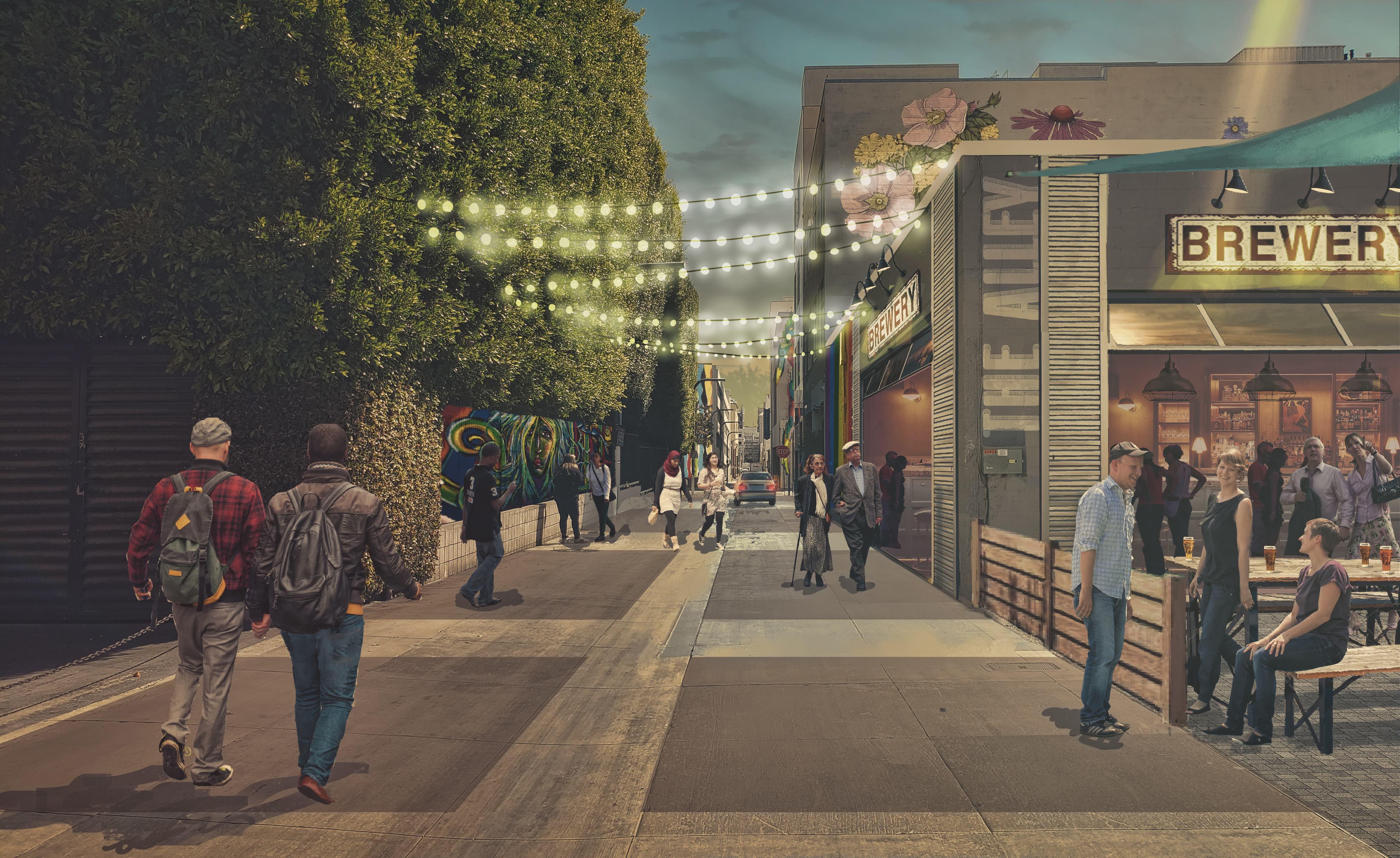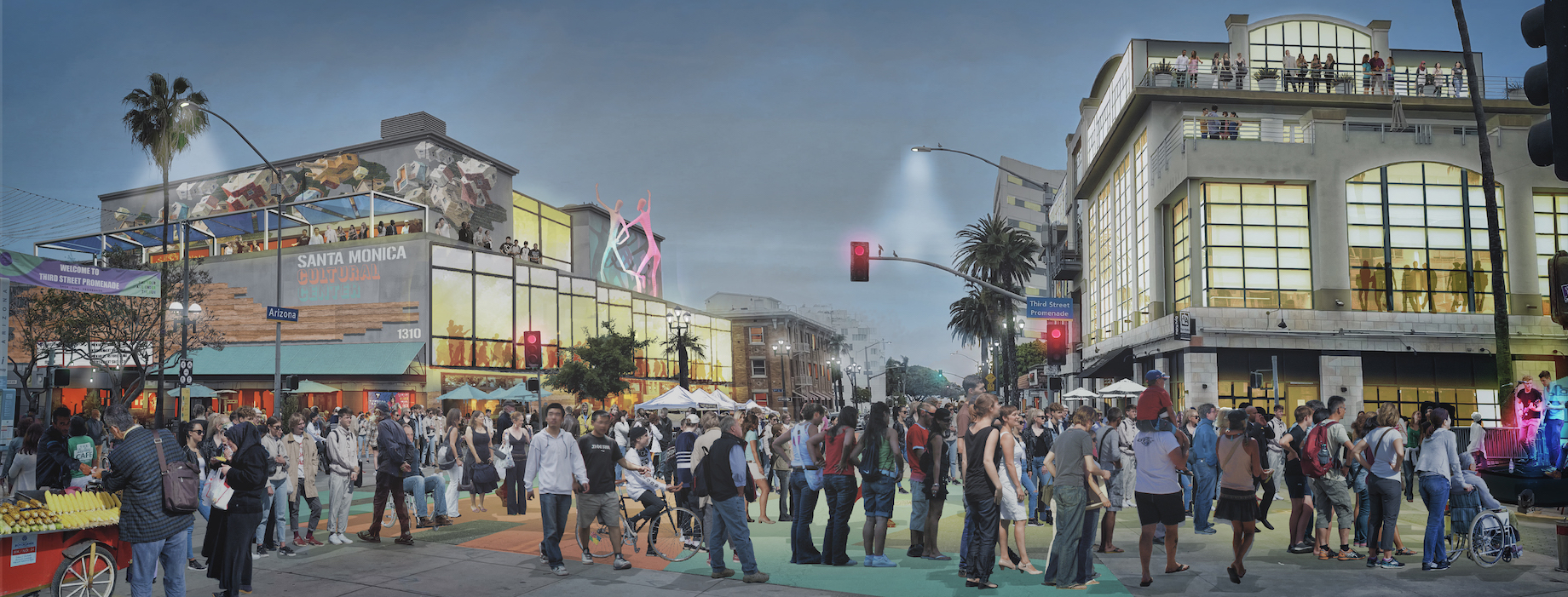After six months of intensive work between the city of Santa Monica, California, and the nonprofit Downtown Santa Monica Inc., or DTSM, the city planning department has approved a plan to revitalize the city’s world-famous, pedestrian 3rd Street Promenade. Along with the plan comes more flexible zoning and codes, as well as incentives. That all means cultural and experiential retail, rooftop restaurants and bars, a town square and more that local landowners can dream up.
The three blocks between Broadway and Wilshire Boulevard involve 45 landowners and account for 15% of the city’s retail sales tax revenue. The Santa Monica city council is expected to review and hold a final vote on the Third Street Promenade Stabilization and Economic Vitality Plan on Aug. 24.
The plan will guide stakeholders as they reimagine the visitor experience and will deliver to property owners both resources and the policy reform they need to reinvest and reconfigure their commercial space. “With the change in retail over the last several years and the fact that the promenade had reached its 30th birthday, we had recognized that it was important for us to look at the downtown area with an eye toward change and reinvestment,” said Kathleen Rawson, who has served as DTSM CEO since its founding in 1985.
“The 3rd Street Promenade has always been not only the economic engine of Santa Monica and probably the west side of Los Angeles, but it has also been a trendsetter and it has been on the cutting edge of how to create a better quality of life in downtown,” said Robert Resnick. He sits on the promenade’s advisory committee and is a property owner there as president and CEO of RDR Properties. “Life has changed and retail has changed, and it was really important to create a road map to the future.”
The planning process actually started before the pandemic, as part of a Promenade 3.0 plan. “But with the pandemic, we pivoted,” said Rawson. “While we were helping businesses maintain their viability as best we could during COVID, we established this planning process that would drill down quite a bit more on the ability for private property owners to change their space configuration to be more conducive to today’s retail needs, which are restaurant and office needs, and review the zoning codes and really look at certain ways that we can energize the street with things like a town square and a real focus on creative culture, which is something that is really missing on the west side of Los Angeles.”

One possibility from the new Santa Monica plan will enable property owners to use their spaces more creatively, including more restaurants.
Both the city and DTSM recognized the need. “Even if we didn’t have COVID, it was still time for us to look at the permitted uses along the promenade and, with the change in retail, to look at: How do we make it easier to do more experiential kind of retail, things that we haven’t traditionally thought of as having along the promenade?” said David Martin, director of community development for the city. “Our zoning ordinances didn’t really accommodate that or made it difficult. It was really important to look at: How do we make it as easy as possible? How does the city get out of the way of these things happening?”
What are the changes?
Upon approval by the city council, several zoning-related changes would take immediate effect. Retail stores facing the promenade would need to be a minimum of 25 feet deep. Promenade parcels are 150 feet deep, and the current code requires 50 feet of depth for retailers fronting the promenade, while the remaining 100 feet can accommodate other uses, such as office. “That provides more flexibility for the property owner,” said Martin. “It also hopefully will create some smaller spaces that could be affordable to different types of tenants we haven’t typically seen, so it accomplishes a few different things.”
Also, rooftop restaurants and bars currently factor in to the building’s floor area ratio, the ratio between total square footage and the size of the land it sits on. A building that has maximized the floor area ratio the city allows can’t add such uses. “We are adopting a provision that exempts rooftop dining and outdoor area from the floor area calculations, which again will help to activate the rooftop and provide more flexibility for the property owners,” said Martin.
Resnick said: “There are a number of very specific, concrete recommendations in the plan. And it includes both entitlements and incentives for private property owners to adapt to emerging trends in the real estate world, and it also provides DTSM the opportunity to reactivate the public space post COVID in a new way. Everybody is looking for newness after the pandemic as things ease up.”
The plan also calls for a town square where Arizona Avenue and the Promenade intersect, pictured at top, to allow for events and festivals.

A vision of a town square for the 3rd Street Promenade
“It is a real partnership,” said Resnick. “The promenade was one of the first deep and comprehensive public-private partnerships that we have had here in Los Angeles, and we are just rekindling that same spirit with this plan and getting everybody around the table and circling the wagons to work together to really create the best experience possible for our local community and visitors.”
By Ben Johnson
Contributor, Commerce + Communities Today